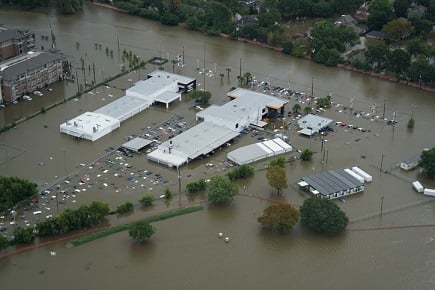Global natural catastrophe losses in 2017 were 93% higher versus the 2000-2016 average, according to Impact Forecasting’s Weather, Climate & Catastrophe Insight: 2017 Annual Report, released today.
The report reveals there were 330 natural catastrophe events in 2017 that generated economic losses of US$353 billion. A whopping 97% (US$344 billion) were due to weather-related events, including Hurricanes Harvey, Irma and Maria in the US and Caribbean, plus Typhoon Hato in China and Cyclone Debbie in Australia.
Insured losses to the private sector and government-sponsored programs were among the costliest ever incurred, reaching US$134 billion in 2017 – just behind the record US$137 billion in 2011. This is 139% higher than 2016’s US$56 billion, primarily due to high insurance penetration in the US which suffered a very active Atlantic hurricane season, severe weather events (convective storms) and wildfires.
How are your wholesale brokers and MGAs performing? Take our Producers on Wholesale Partners survey!
“While 2017 was an expensive year for the insurance industry, the reinsurance market had an estimated US$600 billion in available capital to withstand the high volume of payouts,” Eric Andersen, CEO of
Aon Benfield – parent company of Impact Forecasting. “Most critically, the US weather and wildfire events in particular have demonstrated the value of reinsurance, with claims being paid in an average of eight days to augment the recovery process.”
The report also found:
- 36% (US$80 billion) of economic damage from Hurricanes Harvey, Irma and Maria was insured
- 31 billion-dollar events occurred globally, with 16 alone in the US
- Wildfires caused US$14 billion of insurance losses in 2017 – the highest on record for the peril
- 10,000 human fatalities were caused by natural disasters, with the deadliest event being a massive landslide event in Sierra Leone when more than 1,100 people lost their lives
- 2017 was the third warmest year on record since 1880 for combined land and ocean temperatures
“The high cost of disasters in 2017 served as a reminder that we continue to face increasing levels of risk as more people and exposures are located in areas that are particularly vulnerable to major, naturally occurring events,” said Steve Bowen, Impact Forecasting director and meteorologist. “As weather scenarios grow more volatile in their size and potential impact, it becomes more imperative than ever to identify ways to increase awareness, improve communication, and lower the insurance protection gap. We know natural disasters are going to occur. The question is how prepared are we going to be when the next one strikes.”
Other costly events in 2017 included:
- The October wildfire outbreak was the most destructive ever recorded in the US state of California, causing nearly US$13 billion in economic damage.
- Substantial summer flooding caused more than US$12 billion in damage across China.
- Southern Europe endured an extended drought during the summer and autumn months that caused US$6.6 billion in damage across parts of Spain, Italy and Portugal.
- Elsewhere in Europe, the costliest thunderstorm event of the year affected central sections of the continent, particularly Poland, and left a damage bill of nearly US$800 million.
- In Mexico, two powerful earthquakes in September led to nearly US$6.0 billion in combined economic losses, including major damage across Mexico City on the 32nd anniversary of its historic 1985 tremor.
Related stories:
Heroic adjuster digs through wildfire-devastated home to recover precious jewelry
Revealed: insured losses set new record


